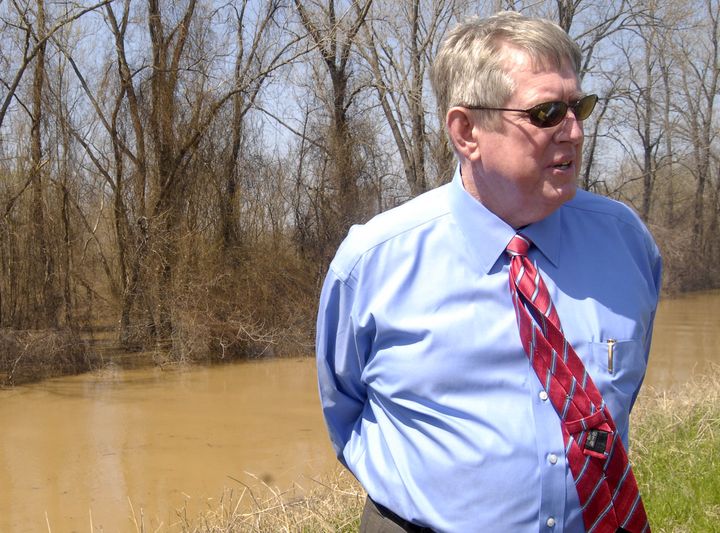
In 1978 the Corp of Engineers built a reservoir along US Highway 412 in Oklahoma that they named Optima Dam. It cost 48 million dollars. In the thirty years since it was built, it has never held so much as a teacup of water. Would you like to know what happened to all that dough?
The failure of Optima Dam and the disappearance of our money is not the result of poor design or poor planning or poor construction; it is all due to the decline in groundwater. If it started raining tomorrow and didn't quit for a long, long time, Optima Dam would fill up and hold water because there isn't a thing wrong with it. Then, Realtors and developers could tack up shore-front 'for sale' signs every 80 feet and middle-aged men with new-aged bass boats could come from Dallas and Kansas City to wet a line in Optima Lake.
But it's not going to rain tomorrow. And even if it does, it won't rain for long enough or hard enough to fill up the now dry rivers and tributaries that were expected to feed Optima Dam and keep it filled. That's because rain itself does not a river make. First, the rain enters the earth and feeds underground springs that in turn burble up as baseflow to drive and direct the flow of rivers. And just as the anklebone is connected to the leg bone, springs are connected to huge underground lakes called aquifers. And so it goes: rain, aquifer, spring, river, reservoir, dam... then drinking water, irrigation, fishing, boating, and finally, Smiling' Jack in a Century 21 sport coat.
In Oklahoma -- and in Texas, New Mexico, Nebraska, Colorado, Kansas, and southern South Dakota -- the aquifer is the Ogallala, an underground lake that, in 1930, was nine times larger than Lake Erie. Since widespread irrigation began in the 1950s, the Ogallala has sustained a net loss of 120 trillion gallons, 11% of its volume. That's one Lake Erie and part of another one. Briefly, water is being pulled out of the ground much faster than it is being put in. Most of it is gone with the full knowledge that it is going and that groundwater overdraft is not an accident; it is a way of life. Today, we are pulling water out of the Ogallala at 25 times the 1950s extraction rate.
William Ashworth, author of Ogallala Blue: Water and Life on the High Plains, writes, "... It is wrong to demand an immediate end to all Ogallala-sourced water use. There are a number of good reasons to pump water out, even though we know it cannot be replaced on anything less than a geological time scale. Groundwater is a mineral, and like most minerals, it has practical value. Leaving it underground and simply enjoying knowing that it is there is not an alternative. But everyone needs to understand what we are doing. Pumping the Ogallala dry will have consequences."
One person who does understand what we are doing is the very fine American writer Annie Proulx. In her novel, That Old Ace in the Hole, she comically and bawdily tells the story of Bob Dollar, a callow and hapless "secret location scout" for Global Pork Rind. The book is about how Bob slowly and only in due course discovers the environmental and human costs of manufacturing "pork units." Along the way, Proulx treats us to a social and natural history of the panhandle that informs us about what is happening to the Ogallala, and how we can become wiser stewards of this great and not readily renewable resource.
There you have it: two books -- Ogallala Blue and That Old Ace in the Hole -- that help get you into the conversational and moral decision-making game. Available at better bookstores.